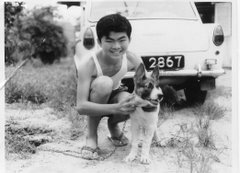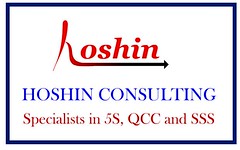Under normal circumstances I like to blog about events, places and people because “I have seen it, been there and done it”. This is the way I feel about “reality memory”. However memories can be supplemented by hand-me down stories and like most stories the level of depth and accuracy can often be compromised when personal sentiments are involved.
Jasmine Lim did a study of the Japanese Occupation of Singapore for her 2002 Masters in Japanese Studies at the National University of Singapore. The thesis confirms many of the stories told to me by my elders about the Great World; before WWII and post-war. There is also a 1946 publication by the Malayan Law Journal called “The Double-Tenth Trial: War Crimes Court” which was held at the Victoria Memorial Hall in March 1946. It provides insights into the world of entertainment during the Occupation. In some ways one can always say that many of the activities we know today could be termed, Japanese “inventions”.
 Photo 1: Aerial reconnaissance over Singapore by “E group” of the Royal Air Force. Photo courtesy from Peter Stubbs Collection
Photo 1: Aerial reconnaissance over Singapore by “E group” of the Royal Air Force. Photo courtesy from Peter Stubbs CollectionGreat World Amusement Park reopened on Dec 4, 1942 and it was synonymous with “casinos”. Why shut for almost 10 months? Great World became Great World POW Camp immediately after the fall of Singapore. The British and their Allies continued to believe that this place housed POWs so there were many air-recon over Singapore. Beside Great World, there were also the River Valley POW Camp - now called Valley Point – Sime Road, Kranji, Pulau Damar Laut (now Jurong Island) and Changi.
There were many gambling dens and a variety of gamings such as Fan-tan and Blackjack. The Japanese Occupation introduced getai performances, literally translates as “singing stage”. Singers stood on the stage crooning a mixture of Chinese and Japanese songs to an audience. Shina no Yoru was one popular song mentioned by my late father. Another feature was the re-opening of the cabaret which did prove a challenge to the Japanese military authorities. On the one hand re-opening meant that life was returning to normalcy under the Japanese but it was considered morally decadent western lifestyle.
July 12, 1942 was a great day for the cabaret in Great World Amusement Park. It re-opened with a new name and far significant changes from its original days. It was now called “Great East Asia Cabaret”. Visiting a cabaret became the pleasure of Japanese officers and their collaborators who sought the company of “Taxi Girls”. I was informed there were no “Taxi Girls” before WWII. It was a decent place for the very rich Chinese towkays. At the cabaret, men bid for women to dance and accompany them for a sum of money. In the words of my elderly uncle, it was “jolly jolly” time for the Japanese officers.
 Photo 2: The cabaret at Great World (c 1945). The blue text indicates its original position and the red text the present.
Photo 2: The cabaret at Great World (c 1945). The blue text indicates its original position and the red text the present.** Next Instalment: Great World Returns
Related posts:


 It was called stores basin because all the supplies/logistics (Non armament and food) for the Royal Navy Far East Fleet were landed in that area where there were many godown type storage areas. There were also oil pipeline connections to each berth linked to the many tanks at Senoko which was the main storage area of fuel for the Fleet. Some tanks are still there and feed the power station I think.
It was called stores basin because all the supplies/logistics (Non armament and food) for the Royal Navy Far East Fleet were landed in that area where there were many godown type storage areas. There were also oil pipeline connections to each berth linked to the many tanks at Senoko which was the main storage area of fuel for the Fleet. Some tanks are still there and feed the power station I think.


 Hint: I used to pass by it regularly on my way to
Hint: I used to pass by it regularly on my way to  Hint: I did not have to do any dangerous stunt like climbing under the bridge to take this photo. I took it from a very public area surrounded by many tourists. Actually I did not take this photo with the mind of blogging. I just liked the pattern of the columns – or whatever you call those concrete things.
Hint: I did not have to do any dangerous stunt like climbing under the bridge to take this photo. I took it from a very public area surrounded by many tourists. Actually I did not take this photo with the mind of blogging. I just liked the pattern of the columns – or whatever you call those concrete things. Yes; indeed Singapore’s waterfront has changed dramatically over the past few decades. Take a look at the two sets of Then and Now photographs below for example. The “Then” photos were taken by
Yes; indeed Singapore’s waterfront has changed dramatically over the past few decades. Take a look at the two sets of Then and Now photographs below for example. The “Then” photos were taken by 







